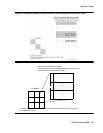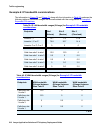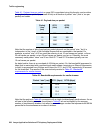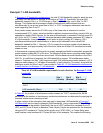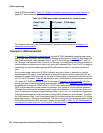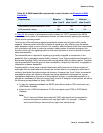
Avaya Distributed Office
Issue 6 January 2008 225
Avaya Distributed Office
Distributed Office is a communications system consisting of a number of geographically
dispersed nodes or branches. Each branch contains a Distributed Office branch solution
running both a SIP proxy server and a SIP feature server for local endpoints. The
single-location Distributed Office solution makes up a self-contained communication system
capable of providing services to local phones and trunks. Distributed Office branch locations are
managed by the Distributed Office Centralized Management, a tool running from a single
location, and by Distributed Office Local Manager, individualized management at each location.
For smaller deployments or for a stand-alone branch, the Local Manager may suffice. Central
and Local Management may be used together in a synchronized manner to provide complete
administration and maintenance for Distributed Office.
Distributed Office has two branch hardware platforms: the i40, based on the various G250
gateways supporting up to 40 stations per branch, and the i120, based on the G350 gateway
supporting up to 120 stations per branch. The i40 and the i120 generally observe the same
resource configuration rules and constraints — for example, for VoIP channels, touch tone
detectors, announcements ports, available media modules slots — as the G250 and G350
gateways on which they are based. Therefore, traffic engineering for each Distributed Office
branch includes the same considerations as those for the corresponding G250 and G350
gateways.
Using SIP, the SES edge router mediates all communication between branch locations. An SES
edge can support up to 1000 Distributed Office branches averaging up to 40 users per branch,
for a total of up to 40,000 stations. The SES edge also handles traffic within one or more main
sites consisting of one or two regular SES homes servicing one or two Communication Manager
systems.
SIP traffic through the SES edge consists of the follow flows:
1. Branch-to-branch call traffic
2. Branch-to/from-main site(s) call traffic
Note:
Note: A main site consists of a large headquarters or business location served by
Communication Manager systems and SES homes.
3. Main site(s) call traffic between Communication Manager systems not linked by non-SIP
TIE trunks
4. Instant messaging between branches and SES homes
5. Presence subscription notification traffic between branches and SES homes
Traffic engineering for the SES edge consists of tracking and estimating the SIP message
routing through the SES edge based on the above message flows. Since there can be only one
SES edge, there is nothing to "configure," per se. Instead, traffic engineering provides an
estimate of the traffic volume handled by the SES edge and compares it to known hardware
performance levels to ensure a robust functioning system operating well-under projected limits.



